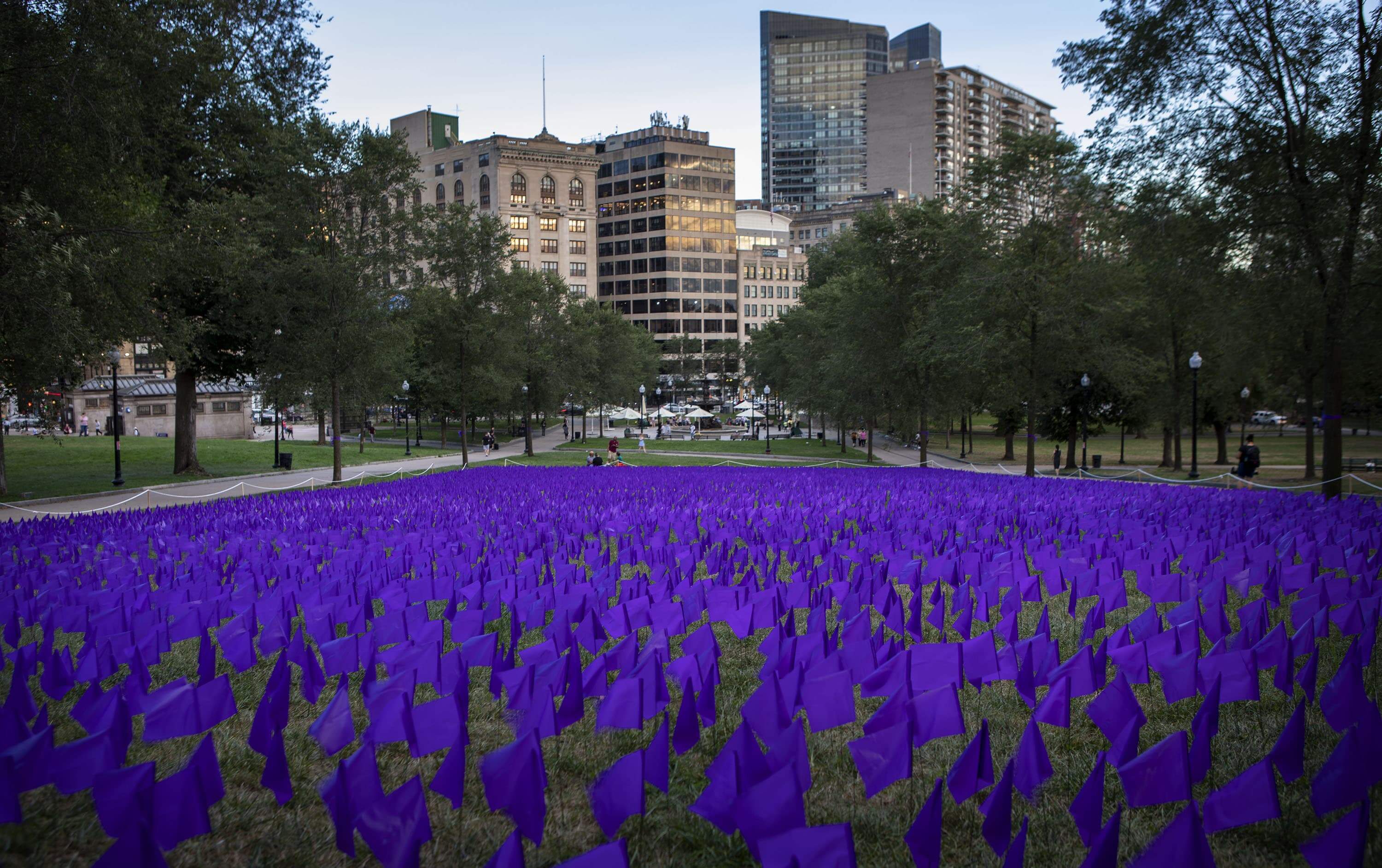Advertisement
Fatal overdoses in Massachusetts remain at grim record highs

In Massachusetts, there’s no let up in the pace of deaths after a drug overdose.
A bi-annual report out Wednesday from the state Department of Public Health showed the rate is expected to hold steady through the end of the year. It was a grim reminder that overdoses remain one of the most challenging public health crises facing the state, as well as the nation.
The fatal overdose rate remained high even as the state flooded outreach groups with naloxone, the drug that can reverse an opioid overdose, funded more mobile treatment programs and opened housing for people using drugs. Public health officials have also targeted programs in the hardest hit areas: Boston, Worcester, Plymouth County and the Cape and Islands.
State Public Health Commissioner Dr. Robbie Goldstein said he’s hopeful these efforts, and others, are saving lives. But he acknowledged, “It’s hard to find hope in the numbers.”
Deaths are leveling off, “but we’re leveling off at the highest number of opioid-related overdose deaths that we’ve ever seen in the commonwealth,” Goldstein said during a briefing on the data. “That’s a really jarring, sobering number to have to report every six months.”
A key challenge for Massachusetts, and the country, is the widespread threat of fentanyl. This synthetic opioid is often detected in cocaine, methamphetamines and fake Xanax or Adderall pills. It can kill people who have no idea they are at risk for an overdose death. Fatal overdoses where both cocaine and fentanyl were present increased 11% in the past year, the report found.
State public health officials said they plan to launch a Night Life campaign focused on occasional drug users. It will explain the fentanyl risk. The state Department of Public Health already funds an overdose prevention hotline where staffers alert emergency medical services if the caller becomes unresponsive.
In addition to fentanyl, public health experts said autopsies are also showing more xylazine mixed with other drugs. It’s an animal tranquilizer that can complicate efforts to revive someone who has overdosed.
“We have a toxic drug supply that does not just affect people who have an opiate use disorder,” said Deirdre Calvert, director of the state’s Bureau of Substance Addiction Services.
Advertisement
But Calvert cautioned outreach campaigns will be ineffective unless people feel comfortable discussing drug use. That can be difficult if they risk legal, financial and personal repercussions.
We have to “allow people to access treatment without fear of incarceration, fear of losing their children, fear of not having health insurance,” Calvert said.
Massachusetts is, for the first time, posting more details about the people who suffer a fatal overdose. Goldstein said for every fatal overdose between 2013 and 2021 there were nine non-fatal overdoses. One of every 11 people who experienced a non-fatal opioid overdose later died after an OD. In addition, having a mental, mobility or developmental disability doubled or tripled the risk of a non-fatal overdose, the data showed.
Goldstein said the state will use this information to target services like vending machines where people can purchase clean needles and other supplies, hospital-based addiction specialists, emergency room trainings on medications to treat a substance use disorder and walk-in clinics where people who use drugs can begin treatment.
The Department of Public Health is also releasing a report that recommends the Legislature pass laws that would make it easier for municipalities to open supervised injection, or overdose prevention, sites where staff are on hand to reverse an overdose if needed.
The latest reports don’t update information about racial disparities in overdose deaths. Data released in June showed substantially higher death rates for Black and Hispanic people.
Massachusetts has made equity its top priority in spending settlement funds stemming from lawsuits against opioid makers and distributors, committing $10 million a year. The bulk of that, $6.5 million, is dedicated to programs for men and women leaving prison, because fatal overdoses soon after incarceration are common.
